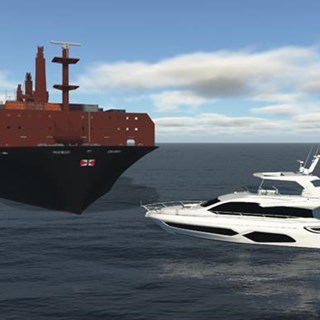
10 November 2024
By Ross Millard, Senior Naval Architect
Submarine availability is often spoken about as a downstream problem - something to be solved through better maintenance practices, more skilled support staff, or improved logistics. But I would argue this: availability is fundamentally a design decision.
If you're a customer responsible for buying or operating submarines, the choices made at the concept design stage will determine how much capability you can actually deliver when it counts. Put simply, a submarine that cannot be at sea when required is a wasted investment.
Navies around the world are facing a common challenge. Build durations are increasing, fleet sizes are shrinking, and the complexity of submarine systems continues to grow. As a result, we are asking fewer vessels to do more, for longer, with less margin for error. It’s not just about performance at sea, it’s about the ability to sustain performance over decades of service.
This is where early design choices become critical. If availability targets are not built into the design from the outset - supported by a realistic and executable Maintenance, Upkeep and Operating Cycle (MUOC) - then the submarine and its supporting enterprise will always be on the back foot.
At BMT, we've been exploring how to change that dynamic - how to put availability at the centre of submarine design. Our work on the WYVERN® concept design is a good example. By developing the support model in parallel with the concept itself, we were able to identify which design features have the greatest impact on through-life availability and engineer them in from the very start.
Take, for instance, the idea of introducing removable hull splice sections - structural cuts designed in from the outset to facilitate rapid access during major maintenance periods. These features allow for complete equipment zones to be accessed, replaced or upgraded without months of intrusive work.
For you as a customer, that means shorter dockings, reduced emergent risks, and more predictable refit schedules.
We also applied a set of design ‘levers’:
Behind these levers are a series of self-evident axioms: simplicity, accessibility, modularity, and standardisation. If we can improve maintainability using these principles, we can directly increase the time a submarine is materially ready for tasking.
And this isn’t just theory. We’ve seen how concepts like zonal design, modular equipment removal, and rationalised system architecture can cut through-life costs while simultaneously increasing availability.
When the design enables a submarine to be maintained faster, safer, and with less dependency on scarce support resources, you're no longer just buying a vessel - you’re buying confidence in sustained capability.
These design features translate into clear customer value:
Availability cannot be retrofitted. Retrospective fixes are always more expensive, more intrusive, and less effective. The time to influence availability is at concept design.
That’s why I believe the traditional separation between design and support needs to be broken down. The submarine enterprise - including the end user - must have a voice in design decisions from the very beginning. Only then can we produce platforms that meet availability targets in practice, not just on paper.
To customers and operators: when you next look at a submarine specification, I urge you to ask not just “what can it do?”- but “how often will it be able to do it?”
That is the real measure of value. And that value is determined, more than anything else, by the choices made in design.

N/A
In a world where complexity is the norm and certainty is rare, adaptability isn’t a luxury, it’s a necessity. And when we combine it with empathy, structure, and a commitment to quality, we create programmes that deliver real, lasting value.

N/A
In a world where complexity is the norm and certainty is rare, adaptability isn’t a luxury, it’s a necessity. And when we combine it with empathy, structure, and a commitment to quality, we create programmes that deliver real, lasting value.

Tim Curtis
Most transformation programmes fail—not because of poor execution, but because they never truly understood the race they were competing in. The BMT Strategy Canvas changes that.

Will Roberts
At BMT, we believe simulation is a critical enabler in overcoming these hurdles—de-risking development, accelerating innovation, and building confidence across the entire lifecycle of autonomous systems.